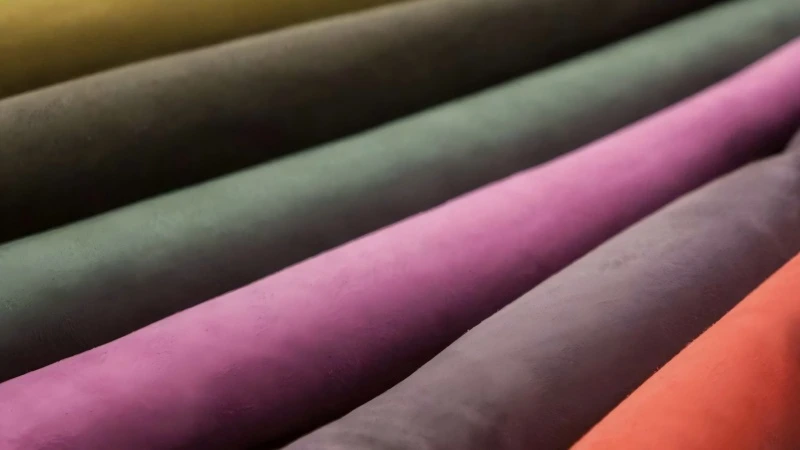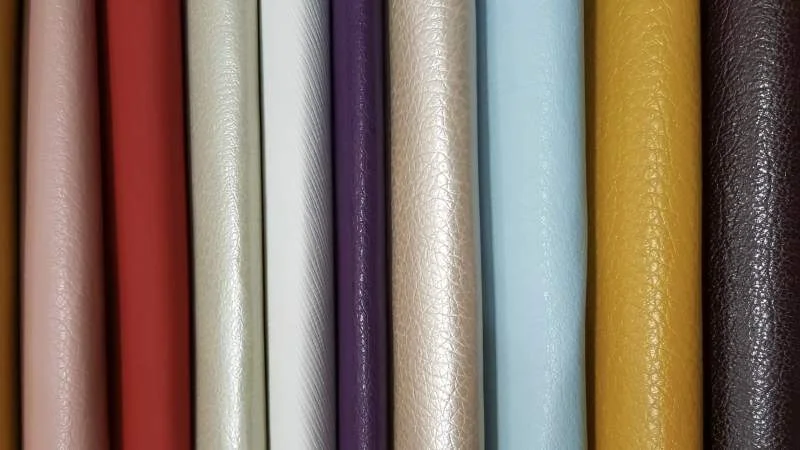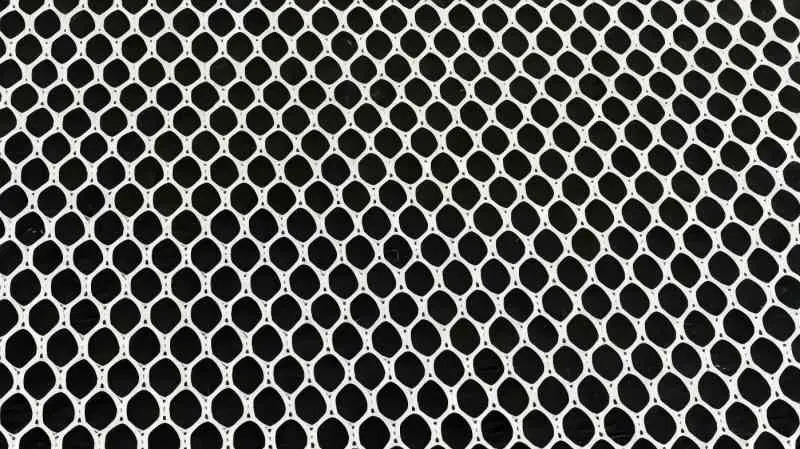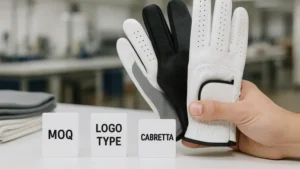Choosing the right fabric for summer golf gloves is critical—not only for player comfort and performance, but also for brand reputation. Whether you’re a golf apparel startup, a private label buyer, or an OEM distributor, understanding the pros and cons of each material can help you deliver gloves that sell and perform.
At Golf Gloves Factory, we’ve helped dozens of international brands manufacture golf gloves optimized for hot weather play. In this guide, we’ll break down the best materials for summer golf gloves based on breathability, moisture control, grip, and cost-efficiency.
1. Cabretta Leather: Premium Grip, Limited Breathability

Best For: Premium tour gloves, hot-but-dry conditions
Pros:
- Ultra-soft feel
- Excellent natural grip
- High-end brand appeal
Cons:
- Less breathable than synthetic fabrics
- Requires care in humid or sweaty conditions
Cabretta leather is a go-to for professional-grade gloves. However, in humid climates or extended play under the sun, it may not provide the best airflow unless combined with mesh back panels.
2. PU Synthetic Leather: The OEM Standard for Hot-Weather Gloves

Best For: Mass production, private-label orders
Pros:
- Durable and cost-effective
- Available in multiple textures
- More breathable than genuine leather
Cons:
- May not offer the same tactile feel as natural leather
PU synthetic leather is widely used in custom golf glove manufacturing because it balances performance with affordability. When paired with perforated or mesh panels, PU gloves perform exceptionally well in summer tournaments and practice sessions.
3. Mesh or Lycra: Maximize Ventilation

Best For: Back-of-hand panels, full mesh training gloves
Pros:
- Excellent airflow
- Enhances flexibility and stretch
- Lightweight
Cons:
- Less grip support—needs to be combined with leather/synthetic palm
Mesh and Lycra are essential components in summer glove design. They allow for full ventilation while offering flexibility during the swing. Most OEM clients use Lycra for finger gussets and back panels.
4. Microfiber: Lightweight, Breathable, and Washable
Best For: Entry-level gloves, range/training gloves
Pros:
- Quick-dry properties
- Machine washable
- Cost-effective
Cons:
- Not as premium in look or feel
Microfiber is ideal for gloves targeting beginners or recreational use in warm seasons. It’s especially favored for bulk orders and promotional OEM gloves.
5. Hybrid Combinations: Tailored for Performance
Want the best of all worlds? Combine materials strategically:
- Cabretta leather palm + mesh back: Luxury + breathability
- PU leather + Lycra inserts: Affordability + flexibility
- Microfiber + silicone grip patterns: Budget-friendly + enhanced control
As a custom golf glove manufacturer, we offer full support in designing hybrid models that suit your brand positioning and target market.
Conclusion: Choose Materials Based on Player Needs & Brand Goals
Whether you’re launching a summer golf glove line or refreshing your existing models, the choice of material impacts comfort, durability, and your brand’s reputation. We recommend offering at least two models:
- A premium Cabretta/Mesh blend for pro-level players
- A PU/Lycra glove for everyday summer wear
At Golf Gloves Factory, we help you customize every detail—material, stitching, grip, logo embossing, packaging, and more.
✅ Looking to launch a breathable golf glove line this summer?
Contact us for OEM/ODM custom golf gloves that meet your buyers’ expectations and withstand summer play.




